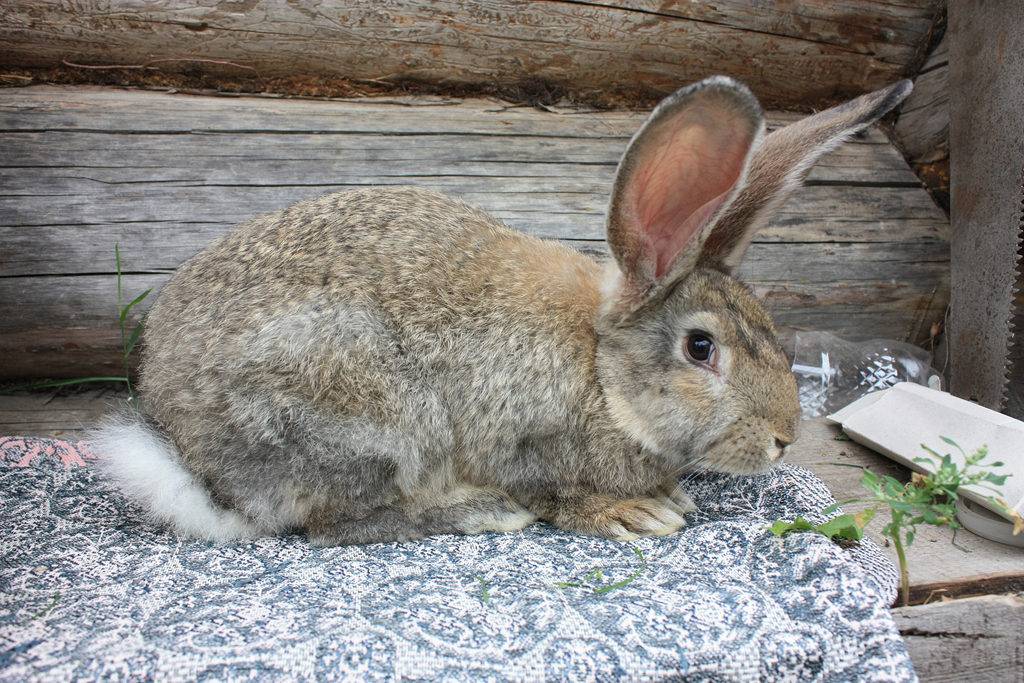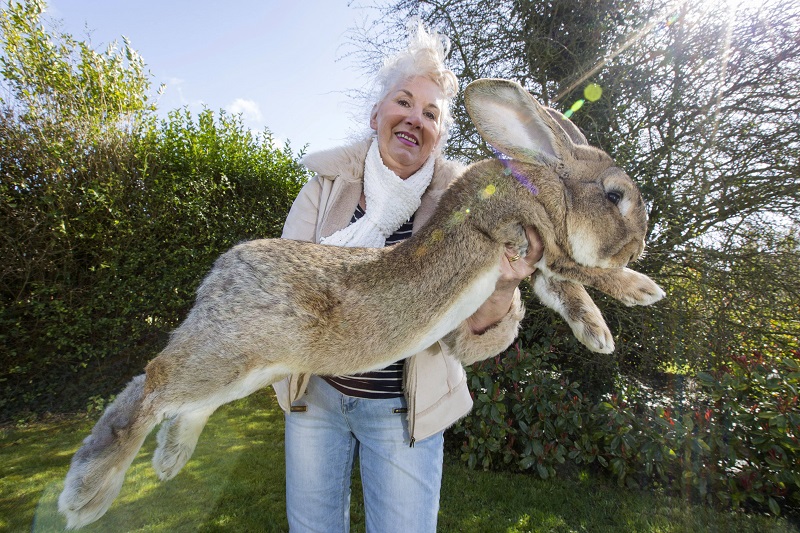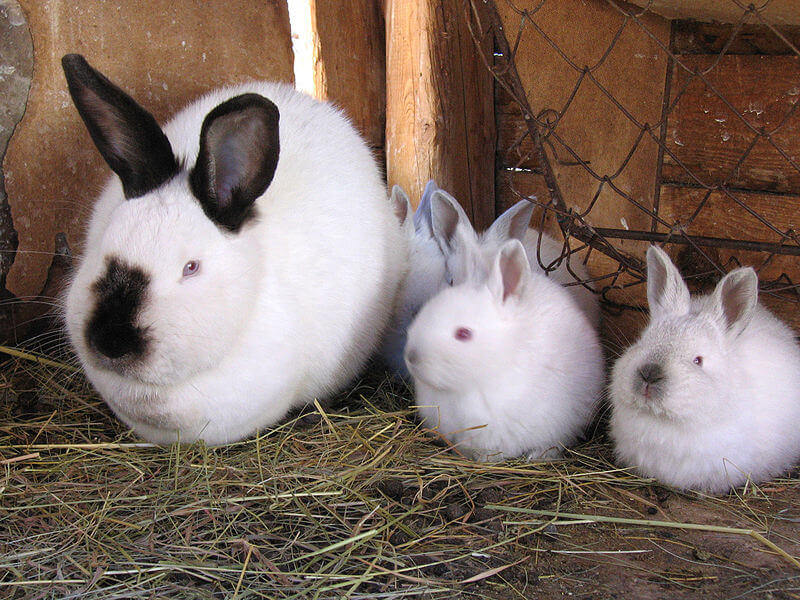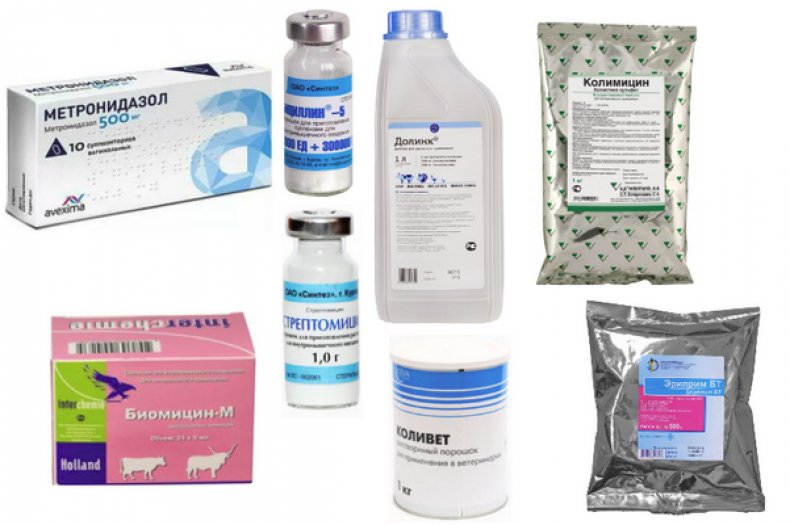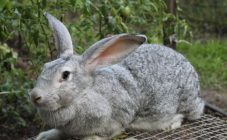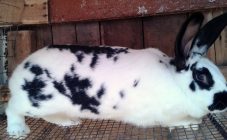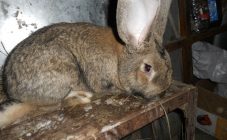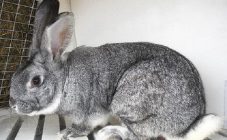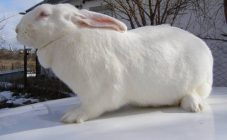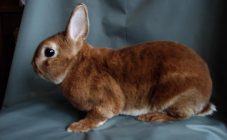Content:
Increasingly, on farms and in industrial production, you can find rabbits, which are loved by consumers for dietary meat and soft beautiful skins. Therefore, many novice breeders are thinking about breeding such lucrative animals. In order not to incur large losses, it is better to give preference to rabbits of meat breeds, which are distinguished by their unpretentious care and high meat yield.
The main types of rocks
There are 4 types of rabbit breeds: meat, meat-skin, decorative and wild. The first two varieties are suitable for cultivation in subsidiary plots.
Meat-skin breeds are bred not only for meat production, but also for high-quality skin. Such breeds are more in weight than meat breeds, but they grow more slowly, their puberty occurs later, moreover, they do not differ in high fertility.
In terms of profit, meat rabbits are profitable in the sense that they grow quickly and are ready for slaughter already at the age of 4-5 months. In addition, meat breeds are distinguished by a calm character, strong immunity and high-quality reproduction.
Popular meat breeds of rabbits
In Russia, more than 20 breeds of rabbits are in demand for breeding in personal plots. The most popular beef rabbits:
- Californian;
- New Zealand;
- gray giant;
- Soviet chinchilla;
- flandre;
- European silver.
Features of large species
Some novice farmers mistakenly assume that large breeds of rabbits are the best for home breeding of the meat-skin direction. Yes, at first glance, a large giant looks quite impressive, but such giants have a large list of disadvantages in breeding and grooming:
- The larger the rabbit, the harder it is to feed and also provide proper care. The giant requires large cages, more litter, and he also eats much more than his fellow breed.
- Large rabbits are susceptible to a number of diseases. These animals are prone to obesity, and also because of their heavy weight, their limbs often hurt. Moreover, among the litter, rabbits with deformed paws are often found.
- Giants are characterized by poor fertility, and their puberty occurs only by 6-7 months. In addition, childbirth is extremely difficult for both the female and the future offspring, so death is not uncommon.
Among the positive qualities, one can single out a calm, friendly character and resistance to diseases common among rabbits. Despite the significant disadvantages of large breeds, their cultivation is common among private subsidiary farms. Several of the most popular breeds can be selected:
- Flandre (Belgian giant). This universal breed, often used in the selection of many meat and meat-skin breeds, is the largest. The average rabbit weight is 8-9 kg, but some individuals grow up to 12 kg. Body length about 75 cm, large head, monochromatic color: black, beige, red. These animals are very picky about keeping conditions and food quality, and also have low fertility (up to 5 rabbits per side).
- White giant. This variety is distinguished by its snow-white skin without any inclusions and delicious meat.But she is extremely capricious in her care: rabbits grow slowly, have low fertility, and rabbits are prone to numerous diseases and often do not survive.
- The Gray Giant is an easy-to-breed breed suitable for beginners. The average weight of an adult male is 6 kg, of a rabbit - 4.5 kg. Rabbits are picky, as they adapt even to the harsh conditions of keeping on the street, have high fertility and resistance to diseases.
- Soviet chinchilla. Outwardly similar to the previous giant, but it is distinguished by a beautiful bluish fur coat, comparable in color to a chinchilla. These are fast-growing rabbits, ready for slaughter already from 4 months, but picky about food: the food must always be fresh, otherwise the animals will get sick.
Advantages of breeding meat rabbits:
- high growth rate;
- easy care;
- disease resistance;
- heavy weight;
- early maturity;
- good fertility and productivity;
- high percentage of surviving rabbits.
Most profitable breeds
It is important for novice businessmen and ordinary farmers to know which rabbits are the most meaty and grow fast. Among the breeds of the meat direction, only 2 are distinguished, which are beneficial in breeding:
- White New Zealand that is native to the United States. These individuals become adults by 5 months, reach puberty, their weight ranges from 4 to 5 kg, and their body length is approximately equal to half a meter. Females of this breed are considered the most prolific, 7-8 cubs are born in one okrol. At the same time, rabbits have a calm disposition, perfectly adapt, and their meat is the most expensive in comparison with other breeds.
- Californian. The description of the breed says that these rabbits grow somewhat faster than New Zealand ones, but the weight of an adult is slightly less - 3-4 kg. Rabbits are the best in keeping, they are distinguished by strong immunity, early maturation, and high fertility.
How to feed meat rabbits
In industrial production, beef rabbits are fed with hay and complete specialty pellets, giving the animals free access to food and water. In fact, it is the ideal diet for rabbits to avoid the common phenomenon of bloating.
In household subsidiary farms, the diet of breed rabbits includes vegetables:
- cabbage;
- beets;
- carrot;
- potatoes.
In summer, the main food for rabbits is greens and vegetables, in winter - hay, grain and high-quality compound feed. Wild herbs useful for rabbits:
- dandelion;
- nettle;
- plantain;
- alfalfa.
How to keep and breed meat rabbits
Purebred rabbits are kept either in cages or in an aviary, but each individual should have free space, because they do not like close proximity. Also, rabbits do not like heat and high humidity.
Cleanliness is an important criterion for keeping rabbits. Dirt in the aviary will lead to illness of individuals and the emergence of parasites. If animals are kept in a cage, then its floor should be slatted so that moisture and waste do not accumulate.
To increase carcass weight, many farmers often cross breeds. The resulting cross has the above qualities, although the heredity of these individuals will already be non-standard.
Diseases and treatment of meat rabbits
Rabbit diseases can be divided into 2 types: infectious and non-infectious. Among the infectious ones are found:
- Cysticercosis is a liver disease caused by cestode larvae.
- Coccidosis is an infection of the gastrointestinal tract of an animal, which is fatal in 70% of cases.
- Pasteurellosis is a dangerous disease that destroys livestock in a few days. Often it gets to animals from birds and rodents, it is possible to cure it with antibiotics if the farmer notices the first sign of the disease in time: a high body temperature of a sick rabbit of 42 ° C.
- Myxomatosis - characterized by the appearance of mixots on the rabbit's body - small nodules that shower the body. There is no way of treatment - the animal is euthanized, the clothes of the contacting person are burned, and the feces of the sick animal are buried to a depth of a meter. The disease should be reported to the veterinary service.
- Listerosis - transmitted by ticks, fleas and lice, dangerous to humans. They treat this disease with antibiotics, which is ineffective: it is better to euthanize the sick animal.
The best prevention of infectious diseases is timely vaccination of the livestock.
Among non-communicable diseases, pneumonia and poisoning should be distinguished.
The first occurs in the presence of drafts, high humidity and sudden pressure drops. Characterized by lack of appetite, fever, hoarse breathing and nasal discharge. For treatment, the animal is placed in comfortable conditions, given a balanced feed and abundant drink, and treated with antibiotics.
Poisoning occurs when poor-quality nutrition, as well as poisonous plants entering the feeder. The disease is characterized by vomiting, diarrhea, loss of strength. First of all, the rabbit is offered a plentiful drink, the correct nutrition is selected. You can drink a sick individual with rice or oat broth, which will help stop diarrhea and remove toxins from the body.
In animal breeding, profitability is the main criterion. Therefore, preference should be given to the type of animals from which there will be a high benefit, such as rabbits. The best breeds bred by breeders will allow everyone to find rabbits to their liking and get the maximum profit from the farm from the sale of rabbit meat.
